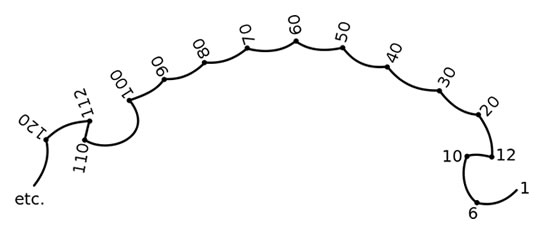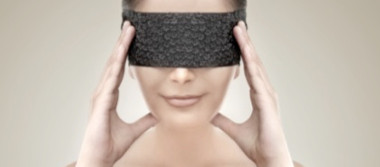

The more global theory of how it works is pretty straightforward: Researchers think that synesthesia is a kind of cross-wiring in the brain. This has led researchers to conclude that synesthesia is quite real, and that it happens early in the perception process your mind, in other words, doesn't spend time searching for a memory association. A grapheme-color synesthete can see the triangle almost instantly. You'd have to look closely to search for the twos, and then discern the shape from there. For example, if you are given a matrix mostly consisting of the number five all over the paper - scattered with a few twos, which form the shape of a triangle - you would have a hard time discerning the triangle.

(You might decide the letter G is blue because you can recall a teal "G" on a poster in your childhood bedroom.) But synesthesia has been shown to be a sensory phenomenon, unrelated to memory. If you don't have synesthesia, you might be trying hard to make associations with colors or numbers related to memories. So we got it: There are lots of synesthesia forms out there. However the map "looks," it stays uniform for the number-form synesthete. They're not necessarily linear, but might curve in and out, or move up and down. Number-form is where a person sees numbers as a very distinct map - often, lower numbers (more commonly seen ones) are bunched up at one end (or the first 12 might imitate a clock face).

For instance, saying that the letter A appears egotistical, the letter B nurturing and the letter C brave - it can happen with numbers, days of the week and so on. Ordinal-linguistic personification is where a person might give personality traits to individual items in ordinal lists. Some less common forms include mirror-touch synesthesia, which causes some people to experience a physical feeling when other people are touched (read Can people feel the pain of others? for more info on this particular twist). Some synesthetes even claim to taste the emotions of other people. They might also associate smells with certain colors, or shapes - let's say the smell of toast might be ochre. This kind of synesthete might taste certain flavors (or even whole dishes or meals) based on a visual picture or word or sound. Next up is one of the rarer (and more delicious) forms of synesthesia, which is lexical-gustatory (or olfactory). This led researchers to conclude that synesthesia might be using the same cross-modal pathways that most people use, rather than pathways special to the condition. Interestingly, a 2006 study did show that sound-to-color synesthetes associated a higher pitch to a lighter color - which non-synesthetes also agreed on. Some lucky folks get to "see" music and associate a wide variety of musical notes with a rainbow of colors. You might experience some sounds as a texture.

This could indicate a few different things it might mean that something as simple as a noise (a car horn, flushing toilet) takes on a color or shape in the mind's eye when it's heard. Īnother synesthesia that is reported is sound-to-color synesthesia. For example, a small 2005 study found that while grapheme-color synesthetes (those who perceive letters, numbers or words as colors) almost always associate a word with a color, many lexical-gustatory synesthetes (those who link words with a certain taste) don't have a particular association with every word. Not every synesthete experience is the same, either in people or between different synesthetic forms. A 2006 study that gave objective tests to subjects found that synesthesia was 88 times more likely than previously thought, and it affected 2-4 percent of the general population. (Or synesthesiac, a term that doesn't exist but I think should.) And although for a long time, researchers thought synesthesia was incredibly rare, it turns out that just asking someone if they experience these symptoms isn't entirely accurate. If you really strongly understand any of these sensations, you might just be a synesthete. So have you found yourself already racking your brain, trying to decide if 8 is purple or the letter Q tastes like bananas?


 0 kommentar(er)
0 kommentar(er)
